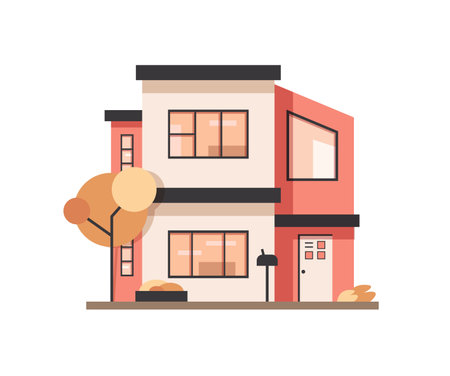Assessing Your Available Space
Before you get started on building a home office in a small space, its crucial to identify where you can set up your workspace. Even if your house or apartment feels packed, there are often overlooked spots that can be transformed into a productive office. Here are some tips and strategies to help you assess your available space:
Look for Underutilized Areas
Start by walking through your home and making note of areas that arent being used to their full potential. Corners, nooks, entryways, and even wide hallways can be great candidates for a compact home office setup. Dont forget about spaces under the stairs or unused closets—these can often be converted with minimal effort.
Common Spots for Small Home Offices
| Location | Potential Benefits | Considerations |
|---|---|---|
| Bedroom Corner | Quiet, private, good for focused work | Avoid disturbing sleep area; manage lighting |
| Living Room Nook | Centrally located, easy access to power outlets | May need dividers for privacy |
| Unused Closet (Cloffice) | Hidden when not in use, customizable shelving | Ventilation; adequate lighting required |
| Under Staircase | Unique and out of the way; space-saving | Check headroom; may need custom furniture |
| Wide Hallway End | Easily accessible; usually near other rooms | Ensure it doesn’t block traffic flow |
Measure Your Space Carefully
Once youve identified possible locations, take accurate measurements. Use a tape measure to get the width, depth, and height of each candidate spot. Jot these numbers down—you’ll need them when choosing a desk or planning built-in storage.
Quick Measuring Checklist:
- Is there enough space for a chair and desk?
- Can you access power outlets easily?
- Is there natural light, or will you need to add lamps?
- Will noise from nearby rooms be an issue?
- Do you have enough vertical wall space for shelves or organizers?
Tune In to Your Work Needs and Habits
Your ideal office spot should match the type of work you do. If you’re on video calls all day, look for places with a neutral background and reliable Wi-Fi. If you need quiet concentration, avoid high-traffic areas. For creative work, seek out spaces with good natural light.
2. Selecting Functional Furniture and Equipment
When you’re creating a home office in a small space, every square inch counts. Choosing the right furniture and equipment is key to maximizing both comfort and productivity without overcrowding your room. Here’s how you can make smart selections that fit your needs and your space.
Space-Saving Desks
A desk is the heart of any home office, but in tight quarters, you’ll want to look for options that offer functionality without taking over the whole room. Consider wall-mounted desks, fold-down desks, or compact writing desks that tuck into corners. Look for models with built-in shelves or drawers to keep your work essentials close at hand.
| Desk Type | Best For | Key Features |
|---|---|---|
| Wall-Mounted Desk | Extremely small rooms or apartments | Folds away when not in use, saves floor space |
| Corner Desk | Utilizing unused corners | L-shaped design, extra surface area, fits snugly in corners |
| Standing Desk Converter | Existing tables or counters | Adjusts height, promotes ergonomic health, portable |
| Compact Writing Desk | Minimalist setups | Slim profile, may include drawers or cubbies for storage |
Ergonomic Chairs for Small Spaces
Your chair plays a big role in your daily comfort and posture. When space is limited, look for chairs with a low profile and slim frame that still offer proper back support. Armless designs or folding chairs can be tucked away when not in use. Prioritize adjustable features so you can tailor the seat to your body, even if the chair itself is compact.
What to Look for in a Small-Space Chair:
- Lumbar support to reduce back strain
- Adjustable seat height and tilt mechanism
- Narrow footprint (less than 24 inches wide)
- Lightweight design for easy movement or storage
- Breathable materials like mesh for comfort during long hours
Essential Office Tech That Won’t Crowd Your Space
The right technology keeps your workflow smooth without cluttering up your desktop. Opt for wireless devices to cut down on cords, and look for all-in-one gadgets that serve multiple functions.
| Device | Why It’s Great for Small Offices |
|---|---|
| Laptop with Docking Station | Saves space versus a desktop tower; docking adds ports as needed. |
| Wireless Keyboard & Mouse Combo | Keeps cords off your desk; easy to stow away when not needed. |
| All-in-One Printer/Scanner/Copier | Takes up less space than separate devices; essential for paperwork. |
| Cable Organizer or Charging Station | Keeps cables tidy and prevents clutter on small surfaces. |
| LED Desk Lamp with USB Ports | Adds lighting and charging options without using extra outlets. |
Pro Tips for Making It Work in Tight Spaces
- Select furniture that doubles as storage—think ottomans with hidden compartments or desks with built-in shelving.
- If possible, go vertical: add floating shelves above your workspace to store books, supplies, or decor.
- Choose light colors or transparent materials (like acrylic) to create the illusion of more space.
- Measure before buying—know exactly how much room you have so nothing feels squeezed in.
- Create zones: use a small rug or divider to visually separate your office nook from the rest of the room.

3. Maximizing Storage and Organization
When you’re setting up a home office in a small space, keeping things organized is key to creating a productive environment. Clever storage solutions can help you make the most out of every inch, prevent clutter, and keep your workspace feeling open and inviting. Here are some practical DIY ideas to maximize storage and organization in your compact home office.
Wall-Mounted Shelves: Going Vertical
Don’t let valuable wall space go to waste! Installing wall-mounted shelves above your desk or along an empty wall instantly adds extra room for books, supplies, or even decorative items. Floating shelves create a modern look and can be customized to fit any space. If you’re handy with basic tools, you can easily install these yourself with a few brackets and a level.
Benefits of Wall-Mounted Shelves:
| Feature | Why It Helps |
|---|---|
| Saves Floor Space | Keeps the area open for movement or other furniture |
| Customizable Heights | You decide how much space you need between shelves |
| Easy Access | Your essentials are always within reach |
Pegboards: Flexible and Functional
Pegboards aren’t just for garages anymore—they’re perfect for organizing office supplies in style. Mounting a pegboard above your desk lets you hang baskets, hooks, or small shelves for storing everything from scissors to headphones. You can rearrange accessories as your needs change, making it a flexible solution that grows with you.
Popular Pegboard Accessories:
- Baskets for pens and markers
- Hooks for headphones or keys
- Shelves for notebooks or decor
- Cups for miscellaneous items like paper clips
Multi-Functional Storage Options
In small spaces, furniture that does double duty is a real game changer. Look for desks with built-in drawers or cubbies, ottomans with hidden storage inside, or filing cabinets that slide under your workspace. These options help keep your work area tidy without adding bulky furniture.
Smart Storage Furniture Comparison:
| Storage Option | Main Benefit | Where to Use It |
|---|---|---|
| Desk with Drawers | Keeps important documents out of sight but close at hand | Under your main work surface |
| Rolling Cart | Easily move supplies where you need them most | Next to or under the desk |
| Storage Ottoman | Doubles as seating and storage for larger items | Corners or under windows |
| Filing Cabinet Stool Combo | Saves space by combining seating and file storage | Tucked away when not in use |
DIY Tip:
If you’re up for a weekend project, try repurposing old crates or wooden boxes as stackable organizers. Paint them to match your decor and use them as modular shelving on the floor or wall.
The right combination of wall-mounted shelves, pegboards, and multi-functional storage will help keep your small home office organized so you can focus on what matters most—getting things done.
4. Optimizing Lighting and Power Solutions
Designing a productive home office in a small space requires smart choices when it comes to lighting and power management. Let’s break down practical tips for natural and task lighting, selecting efficient LED options, keeping cables tidy, and ensuring safe use of power strips.
Natural vs. Task Lighting: Finding the Right Balance
Natural light is your best friend for both mood and productivity. If possible, set up your desk near a window to take advantage of daylight. However, you’ll still need dedicated task lighting—think desk lamps or adjustable wall lights—for cloudy days or late-night work sessions. Here’s a quick comparison:
| Lighting Type | Benefits | Best Use Cases |
|---|---|---|
| Natural Light | Reduces eye strain Boosts energy & mood Saves on electricity |
General workspace illumination Mornings & afternoons |
| Task Lighting (LED Desk Lamp) | Focused light Adjustable brightness Low heat output |
Detail work Evenings & nights No window access |
Selecting LED Options for Small Spaces
LED lights are the go-to choice for compact offices because they’re energy-efficient and don’t overheat your workspace. Look for lamps with:
- Dimmable settings: Adjust brightness to match tasks and time of day.
- Color temperature control: Cool white for focus, warm white for relaxation.
- Clamp-on or wall-mount design: Save valuable desk real estate.
Cable Management Made Simple
Tangled cords can make even the nicest setup look messy—and they’re a tripping hazard in tight quarters. Try these cable management solutions:
- Cable clips or sleeves: Route wires along walls or under desks.
- Cord boxes: Hide bulky power strips and adapters.
- Labeled zip ties: Keep cables organized and easy to identify.
Safe Use of Power Strips in Compact Settings
Avoid overloading outlets in your small home office. Choose a quality surge-protected power strip, and remember these safety tips:
- Avoid daisy-chaining: Don’t plug one power strip into another.
- Keep away from heat sources: Prevent overheating by placing strips on open surfaces.
- Regularly check cords: Replace any that are frayed or damaged immediately.
- Select right capacity: Ensure the strip can handle all your equipment without exceeding its rating.
A well-lit, safely powered workspace makes working from home more comfortable—and much safer—even in the smallest spaces.
5. Personalizing and Soundproofing Your Workspace
Ways to Make Your Home Office Inviting and Uniquely Yours
Making your small home office feel comfortable and personal is key to boosting productivity and enjoying your workday. Even with limited space, you can add touches that make the area feel like your own. Here are some simple ideas:
| Personalization Idea | Description |
|---|---|
| Add Photos or Art | Display family photos, travel snapshots, or framed prints that inspire you. |
| Use Colorful Accessories | Brighten up your desk with fun organizers, a unique mouse pad, or a patterned rug. |
| Bring in Plants | Small potted plants or succulents add life and help purify the air. |
| Incorporate Lighting | Add a desk lamp with adjustable brightness for both function and style. |
| Personal Mementos | Keep a favorite mug, figurine, or keepsake nearby for a touch of home. |
Basic Soundproofing Hacks for Small Spaces
Distractions from family members, roommates, or street noise can make it tough to focus when working in tight quarters. While full-scale soundproofing isn’t always possible, these DIY tricks can help reduce noise:
Soundproofing Tips and Tricks
- Add Rugs or Carpets: Soft surfaces absorb sound. Place a thick rug under your chair or on the wall behind your desk to muffle echoes.
- Hang Curtains: Heavy curtains over windows (and even over doors) can block noise from outside or other rooms.
- Use Bookshelves as Barriers: Filled bookshelves act as effective sound barriers—position one behind or beside your workspace if possible.
- Seal Gaps: Use weatherstripping tape around doors and windows to prevent sound leaks.
- DIY Acoustic Panels: Mount foam panels (or even padded bulletin boards) on walls to absorb noise. They’re affordable and easy to install with adhesive strips.
- Noisy Neighbor Fix: If you share walls with neighbors, placing furniture like filing cabinets or dressers against those walls can help block sounds.
Quick Reference: Soundproofing Materials Table
| Material | Main Benefit | How to Use in Small Offices |
|---|---|---|
| Rug/Carpet | Muffles footsteps & echoes | Lays flat under desk/chair area or mounts on walls as tapestry-style panels. |
| Curtains (Heavy/Blackout) | Blocks outside noise & adds privacy | Covers windows and doors; easy to open/close as needed. |
| Foam Panels/Bulletin Boards | Dampens airborne noise & reduces reflections | Easily attaches above desk or on side walls with adhesive strips. |
| Weatherstripping Tape | Keeps out drafts & sound leaks from gaps | Lined along door/window frames where air passes through. |
| Bookshelves/Furniture Barriers | Adds mass to block sound transmission through shared walls | Pushed against noisy walls for extra insulation and storage use. |
Your Office, Your Rules!
A small home office doesn’t have to feel generic or noisy. With just a few creative tweaks and some basic soundproofing hacks, you’ll have a workspace that feels comfortable, inspiring, and uniquely yours—no matter how limited the square footage may be.
6. Setting Up for Productivity and Well-being
Practical Tips for a Healthy Work-Life Balance
Working from home in a small space can blur the lines between your job and personal life. Here are some practical strategies to help you stay productive, organized, and healthy while working remotely.
Establish Daily Routines
Sticking to a daily routine helps create structure and signals when it’s time to work or relax. Consider these essentials:
| Routine Element | Why It Matters |
|---|---|
| Set Start/End Times | Keeps your workday on track and prevents overworking. |
| Morning Rituals | Helps transition into “work mode” (coffee, light exercise, planning). |
| Regular Breaks | Reduces fatigue and boosts focus; try the Pomodoro technique. |
| After-Work Wind Down | Makes it easier to mentally switch off from job tasks. |
Create Workspace Separation
Even in tight quarters, separating your workspace from living areas is key for mental clarity. Try these solutions:
- Physical Barriers: Use bookshelves, curtains, or folding screens to mark off your office zone.
- Dedicated Surface: Reserve a table or desk only for work-related items.
- Visual Cues: Put away your laptop and work materials at the end of each day.
Focus on Wellness While Working Remotely
Your well-being should be a top priority in any home office setup. Here’s how you can keep health front and center:
| Wellness Tip | Description |
|---|---|
| Ergonomic Setup | Adjust your chair, monitor, and keyboard to support good posture. |
| Natural Light & Fresh Air | If possible, set up near a window and open it regularly. |
| Movement Breaks | Stand up, stretch, or walk around at least once every hour. |
| Mental Health Check-ins | Stay connected with friends or colleagues via chat or video calls. |
| Healthy Snacks & Hydration | Keep water and nutritious snacks handy to avoid fatigue. |
Cultural Fit: The American Home Office Mindset
A U.S.-style home office is all about balancing productivity with comfort. Don’t be afraid to personalize your workspace—add family photos, motivational quotes, or even a favorite coffee mug. Remember, taking care of yourself is just as important as getting the job done!


